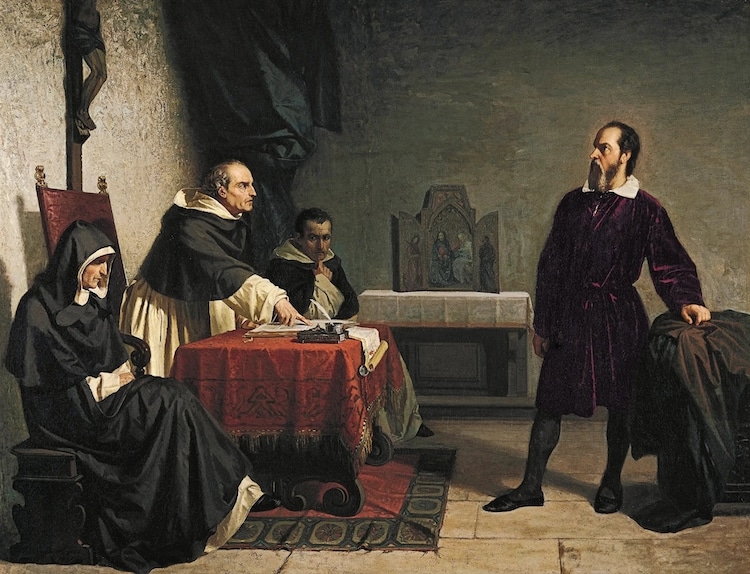Born in Pisa in 1564,Galileo Galileiis known to the world for changing how science is viewed.
A strong proponent of thescientific method, he advocated for carrying out research to support scientific theories.
And, importantly, he was a major advocate for how we view the stars.

“Portrait of Galileo” by Justus Sustermans (Photo: Public domain, viaWikimedia Commons)
We’re exploring a bit more about Galileo and sharing six facts about this genius.
Here are 6 facts about Galileo that show what an incredible life this scientific genius lived.
However, he left school in 1585 without having graduated.

Galileo Offering His Telescope to Three Women, published in “The tradition of technology: Landmarks of Western technology,” (Photo:Library of Congress)
Despite his status as a dropout, his publications and inventions gained him a stellar reputation.
However, that didn’t stop him.
He challenged popular thoughts on astronomy and physics.

Illustration of the Moon in Galileo’s “Sidereus Nuncius,” published in 1610. (Photo: Public domain viaWikipedia)
Aristotle’s work was widely accepted by academics, but Galileo dared to challenge those notions.
For instance, Aristotle taught that heavier objects fell faster than lighter objects in proportion to their weight.
Galileo debunked that notion by dropping balls off the Leaning Tower of Pisa.

“Galileo facing the Roman Inquisition” by Cristiano Banti (1857). (Photo: Public domain viaWikipedia)
By making improvements to thetelescope, he was able to make incredible observations of the night sky.
This included viewing Venus.
Galileo actually observed that the planet went through phases similar to the Moon.
Thus, he concluded, Venus must revolve around the Sun.
At a time when Earth was thought to be the center of the universe, this was a problem.
Illustration of the Moon in Galileo’s Sidereus Nuncius, published in 1610.
(Photo: Public domain viaWikipedia)
Galileo made landmark observations about the Moon.
He used the telescope to discern many celestial bodies, including the Moon.
Up until this point, Aristotle’s view that the Moon was perfectly smooth was accepted as true.
Galileo also drew out the phases of the Moon.
Again, these concrete observations caused conflict with accepted beliefs in the 17th century.
This quickly caused him to conclude that they were orbiting the planet.
What he’d discovered were Jupiter’s four largest moons.
Now known as the Galilean moons, they are named Io, Ganymede, Europa, and Callisto.
The discovery revolutionized astronomy at the time because, once again, they pointed to defects in Aristotelian cosmology.
Once again, Galileo’s work pointed to big problems with the accepted philosophy.
Galileo facing the Roman Inquisition by Cristiano Banti (1857).
(Photo: Public domain viaWikipedia)
Galileo was tried by the Inquisition.
Eventually, his work had consequences when Father Niccolo Lorini submitted his beliefs to the Inquisition in 1615.
In the end, the commission declared that heliocentrism was foolish and absurd in philosophy, and formally heretical.
Interestingly, his downfall came after his trusted friend Cardinal Maffeo Barberini became Pope Urban VIII in 1623.
He asked Galileo to write a book giving arguments for and against heliocentrism.
This greatly angered the church, which brought Galileo in front of the Inquisition again in 1633.
This time, it didn’t end well.
He was put under house arrest, and he remained there for the rest of his life.
His book was formally banned.
Photo: patchpatchara.hotmail.com/DepositPhotos
Albert Einstein was an admirer.
In fact, one modern geniusAlbert Einsteinrecognized the importance of his work.
Einstein called Galileo the father of modern physics and modern science.
The early work that Galileo conducted with pendulums was the precursor to mechanics later developed by Sir Isaac Newton.
Propositions arrived at by purely logical means are completely empty as regards reality.
The Mathematician Who Left Behind a Mysterious Last Theorem